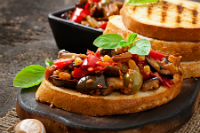SEPTEMBER 2016
WHAT’S NEW
FOOD & YOU: THE BODY-MIND CONNECTION

While some body-mind effects are due to naturally occurring nutrient content in food, much is due to hidden additives. Below, are four common culprits. If you’re experiencing symptoms that interfere with your quality of living, talk with your natural health practitioner about the role these or other foods may play in your health.
FOODS THAT IMPACT BODY-MIND WELL-BEING
CAFFEINE. The most socially accepted psychoactive substance in the world, caffeine is used to boost alertness, enhance performance, and even treat apnea in premature infants. Caffeine is frequently added to other foods, so be mindful of total consumption. Too much caffeine (500-600 mg daily) interferes with sleep quality, which affects energy, concentration, and memory. Caffeine can aggravate other health conditions, cause digestive disturbances, and worsen menstrual symptoms and anxiety.
FOOD DYE. Those brightly colored, processed and packaged foods come with a rainbow of health risks. Listed on ingredient labels as “Blue 2,” or “Citrus Red,” food dye has been documented to contain cancer-causing agents (e.g., benzidine). They’re also associated with allergic reactions and hyperactivity in children. Dyes are sometimes used to enhance skin color of fruits and veggies. A number of dyes have been banned from use in foods and cosmetics around the world.
SUGARS. Increased sugar consumption (as much as 30% over the last three decades for American adults), is linked to decreased intake of essential nutrients and associated with obesity, diabetes, inflammatory disease, joint pain and even schizophrenia. Too much dietary sugar can result in blood sugar fluctuations, causing mood swings, anxiety, irritability, headaches, and increased depression. Sugars that can act as poison include High Fructose Corn Syrup (HFCS), table sugar, artificial and “natural” sweeteners.
MSG. Monosodium glutamate is a flavor enhancer common in packaged and prepared foods. Although the FDA considers MSG “generally safe,” some individuals experience a complex of physical and mental symptoms after eating MSG-containing foods. Symptoms vary but can include headache, sweating, nausea, chest pain, heart palpitations, and over-stimulation of the central nervous system which can lead to alterations in sleep, mood, and immunity.
Becoming aware of your food choices, why you make them, and how you feel mentally and physically is an important first step in understanding your personal body-mind food connection. Your practitioner may ask you to keep a mind-body food journal to provide a clear picture of how your food choices affect your health.
REFERENCES
- Prasad, C. “Food, Mood and Health: A Neurobiological Outlook.” Brazilian Journal of Medical and Biological Research (1998). 31(12): 1517-1527.
- Rippe, J., et al. “Controversy about Sugar Consumption: State of the Science.” Eur J Nutr (2016). doi:10.1007/s00394-016-1227-8. Accessed on 10 July 2016.
- The Obesity Society. Increase in U.S Sugar Consumption. Accessed on 10 July 2016.
- Centers for Disease Control: National Center for Health Statistics: Nutrient Intake by Age.
- Bray, George A. “Energy and Fructose From Beverages Sweetened With Sugar or High-Fructose Corn Syrup Pose a Health Risk for Some People.” Advances in Nutrition 4.2 (2013): 220-225. PMC. Web. 10 July 2016.
FOOD FOR THOUGHT. . .
“Food for the body is not enough. There must be food for the soul.” – Dorothy Day
EGGPLANT: VERSATILE & GOOD FOR YOU

It’s best to buy eggplant in-season during the months August through October. It comes in all sorts of shapes (baseball size to a thick crescent) and a cornucopia of colors such as lavender, jade green, and yellow-white. Choose eggplants that are firm, vivid in color, and heavy for their size. The skin should be smooth, shiny and without damage.
To test for ripeness, press your thumb into the eggplant. If the skin doesn’t “spring back,” it’s not ripe. Eggplant is highly perishable so don’t cut it before storing. Keep it stored in a food crisper or on the shelf in the fridge for a few days.
REFERENCES
- Worlds Healthiest Foods. “Eggplant.” Accessed on 4 July 2016.
- Whitaker, B.D., Stommel, J.R. “Distribution of Hydroxycinnamic Acid Conjugates in Fruit of Commercial Eggplant (Solanum melongena L.) Cultivars.” J Agric Food Chem. (May 2003) 51(11): 3448-54. Accessed on 5 July 2016.
- Murray, Michael T., Pizzorno, J. The Encyclopedia of Healing Foods (2005). Atria. Excerpt on Eggplant.
- Das, S. et al., “Cardioprotective Properties of Raw and Cooked Eggplant (Solanum melongena L).” Food Funct. (2011) 2, p. 395-399. DOI: 10.1039/C1FO10048C. Accessed 5 July 2016.
- EatingWell.com. “10 Healthy Eggplant Recipes.” Accessed 5 July 2016.
RECIPE: EGGPLANT CAPONATA
Satisfying and versatile, eggplant can handle a variety of flavorful accompaniments, several of which give a kick to this Sicilian favorite. The tomato base is spiked with anchovies, garlic, and capers, creating a mouth-watering aroma and a burst of flavor in every bite. Serve as an appetizer, a main dish or as a side with your favorite fish. All organic ingredients.
Makes 4-6 Servings
2 large Italian eggplants, peeled and medium diced
2 tbs Himalayan salt
5 tbs coconut oil, ghee butter, or other high heat oil
1 red onion, thinly sliced
4 medium garlic cloves, thinly sliced
4 celery stalks, thinly sliced on an angle
2 anchovies, in oil (optional)
1/4 cup tomato paste
1/2 cup red wine vinegar
1/2 cup capers, in brine

Heat 3 tbs of the coconut oil over medium heat in a large sauté pan. Add the onion and sauté until translucent, 4 to 5 minutes. Add the garlic and celery and sauté for 5 minutes more, or until the garlic softens but does not brown. Add the anchovies and cook for 1 minute. Add tomato paste and stir to thoroughly combine. Cook for 2 minutes, or until the paste turns a deep red, almost brown, and starts to stick to the pan.
Add vinegar and stir until mixture thickens, 3 to 4 minutes. Turn off heat. In another large sauté pan, heat the remaining 2 tbs coconut oil over high heat until smoking. Add the eggplant and carefully toss it in the oil, letting it sear before stirring. Turn the heat down to medium and cook for 8 to 10 minutes, or until the eggplant is translucent and soft. Transfer eggplant to the caponata mixture and cook over low heat for 3 minutes, until the flavors combine. Add the capers and their brine and stir to incorporate. Serve warm or at room temperature accompanied by organic gluten-free toast points or buckwheat crackers.
OAT, MY GOODNESS!

Other important effects of having a serving of oats in your daily diet include: support for digestion, sexual health, and bone health, as well as enhancing energy and maintaining a positive mood. Oat is a fantastic source of dietary fiber, which helps maintain a healthy gut. Oat has been studied in the management of male sexual dysfunction as well as managing menstrual symptoms and regulating blood sugar levels. It’s also an excellent source for B vitamins and the mineral manganese, which play important roles in physiological processes that support the health of mind and body. It is best to opt for gluten free oats.
REFERENCES
- Keogh, G.F., Cooper G.J., et al., “Randomized Controlled Crossover Study of the Effect of a Highly Beta-Glucan-Enriched Barley on Cardiovascular Disease Risk Factors in Mildly Hypercholesterolemic Men.” Am J Clin Nutr (October 2003), 78(4): 711-718. PMID 14522728. Accessed on July 3, 2016.
- Whitehead, A., Beck, E., et al., “Cholesterol-Lowering Effects of Aat β-glucan: A Meta-Analysis of Randomized Controlled Trials.” Am J Clin Nutr (December 2014), 100(6): 1413-1421. Accessed on: July 3, 2016.
- Malviya N., Jain, S., et al.,. Recent Studies on Aphrodisiac Herbs for the Management of Male Sexual Dysfunction-A Review. Acta Poloniae Pharmaceutica. (2011 January-February) 68(1):3-8. Accessed on July 3, 2016.
- Singh R1, De S, Belkheir A. “Avena sativa (Oat), A Potential Neutraceutical and Therapeutic Agent: An Overview.” Crit Rev Food Sci Nutr. (2013) 53(2):126-44. doi: 10.1080/10408398.2010.526725. Accessed on July 3, 2016.
SOOTHE EMOTIONAL ANGST WITH MOTHERWORT (Leonurus cardiaca)

Motherwort has the ability to calm without causing drowsiness, and it has medicinal effects on circulation and heart rate. Because it can thin the blood, this herb should be used carefully and under the guidance of a qualified herbalist or natural health practitioner.
REFERENCES
- Mars, B. & Fiedler, C. Home Reference Guide to Holistic Health & Healing. (2015.) p.191-192. Beverly, MA: Fair Winds Press.
- NatureGate.com “Motherwort.” Accessed on July 3, 2016.
- NDHealthFacts.com “Leonurus cardiaca.” Accessed on July 3, 2016.
- Hoffmann, D. Medicinal Herbalism. The Science and Practice of Herbal Medicine. Rochester, Healing Art Press 2003. Pp. 501, 502, 509, 514-517.
- Murray, M. “Hypertension.” As cited in Pizzorno, Joseph E. (2013). Textbook of Natural Medicine. St. Louis, MO Elsevier. (chapter 174), 1475-1485.
- Johnson, R.L., S. Foster, Low Dog, T. and Kiefer, D. “Plants and the Heart” in National Geographic Guide to Medicinal Herbs: The World’s Most Effective Healing Plants. Washington, D.C.: National Geographic, 2012. 100-101.
KEEP A MIND-BODY FOOD JOURNAL FOR HEALTH & HEALING

A mind-body food journal helps create clarity between what we choose and how we feel. It leads the way to improved choices and – because food is medicine – supports total mind-body health and healing.
Start your journal today and make it fun! Track your eating habits for a few weekdays and at least one weekend day. Do this for at least two weeks.
WHAT TO TRACK IN A MIND-BODY FOOD JOURNAL
FOOD FACTORS
When did you eat?
What did you eat?
How much did you eat?
Why did you eat?
How did you feel after eating?
MIND FACTORS
What was your overall mood before and after eating?
Did you have headaches, or mental/emotional fatigue?
BODY FACTORS
What did you notice about your body before and after eating?
SOCIAL & ENVIRONMENTAL FACTORS
Who were you with for the meal?
Did you eat hurriedly or calmly?
Were you doing another activity while eating?
Review your journal at the end of each day and summarize your habits. Remember that the best way to provoke change is to become aware of what currently is- your relationship with eating and food. Note the key factors for why you chose to eat the way you did, what was going on, how you felt and if there were any physical symptoms. You and your holistic healthcare practitioner can use this information to help make healthier food choices.
REFERENCES
- MindfulBody.com. “Food Journal Practice.” Accessed on 5 July 2016.
- Health.com. “6 Fascinating Things a Food Journal Can Teach You About Your Eating Habits.” Accessed on 5 July 2016.
- FamilyDoctor.org. “Keeping a Food Diary.” Accessed on 5 July 2016.
- MedicineTalk.org. “Health Apps Can Motivate You to Eat Better, Move More.” Posted February 2016 by Karen M. Rider. Accessed on 5 July 2016.
GUIDING PRINCIPLES

First Do not Harm

Identify and Treat the cause

Healing Power of Nature

Doctor as Teachers

Treat the Whole

Prevention is best Medicine
Follow us on instagram
BLOG
Become an educated consumer with our Indigo Blogs and prevent dis-ease.
Our Doctors have been featured in:









